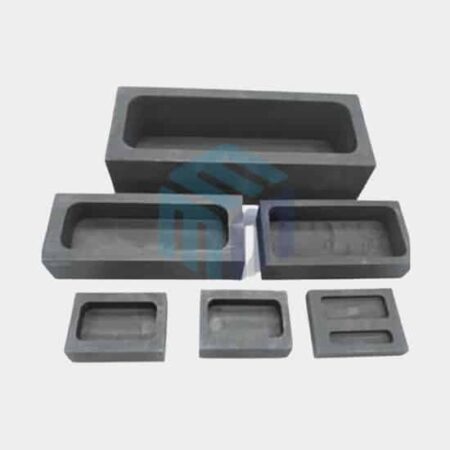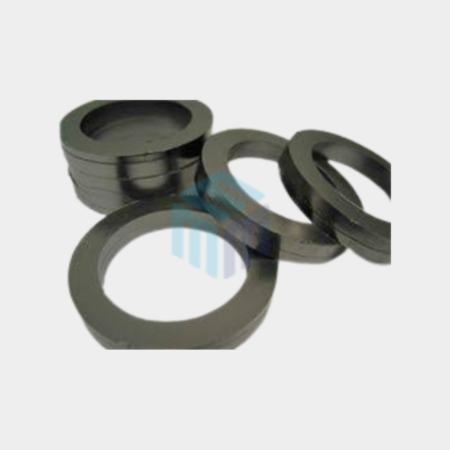Graphite Tubes, Graphite Pipes and Graphite Rods
Inquiry NowProduct Description
Graphite is a form of carbon with a unique atomic arrangement that imparts it with exceptional properties. Graphite tubes and rods are primarily composed of high-purity graphite, which is typically derived from natural graphite or synthetic graphite. High-purity graphite ensures excellent thermal and electrical conductivity.
Graphite is known for its high thermal conductivity, low coefficient of thermal expansion, chemical inertness, and lubricating properties. Graphite tubes and rods find applications in various industries, including metallurgy, chemicals, electronics, and aerospace.
Graphite Tubes Manufacturing Process
Graphite tubes and rods are usually manufactured through a process called extrusion or isostatic pressing.
-
- Extrusion: In this process, graphite powder mixed with binders is forced through a die to form the desired shape. The extruded shape is then heated to remove the binders and achieve the final graphite structure.
- Isostatic pressing: Isostatic pressing involves subjecting graphite powder to high pressure in a flexible mold using fluids. This compresses the powder to form a solid structure that is then further processed to obtain the desired tube or rod shape.
Graphite Tubes Customizations
Graphite tubes are hollow cylindrical structures with varying inner and outer diameters, wall thicknesses, and lengths. Graphite rods, on the other hand, are solid cylindrical structures with uniform diameters and lengths. The dimensions of graphite tubes and rods can be customized according to specific requirements.
Graphite tubes and rods can be customized with features like threaded ends, flanges, or other connectors to facilitate installation and connections in specific applications.
It’s important to note that the specific properties and dimensions of graphite tubes and rods can vary based on the manufacturer and the intended application. Therefore, it’s advisable to consult the M-Kube team for detailed specifications and recommendations based on your specific needs.
Properties of Graphite Tubes and Rods:
Graphite tubes and rods possess several desirable properties, including:
-
- High thermal conductivity: Graphite tubes and rods have excellent thermal conductivity, allowing efficient heat transfer.
- Low coefficient of thermal expansion: Graphite tubes and rods exhibit a low coefficient of thermal expansion, providing dimensional stability even at high temperatures.
- Chemical inertness: Graphite tubes and rods are resistant to many chemicals, acids, organic solvents and corrosive environments, making it suitable for handling various corrosive substances.
- Lubricating properties: Graphite tubes and rods have natural lubricating properties, reducing friction and wear in applications where sliding or rotating components are involved.
- Electrical conductivity: Graphite tubes and rods are an excellent electrical conductor, making it suitable for electrical applications.
- High-temperature resistance: Graphite tubes and rods can withstand drastic change of temperatures. They can reach the highest operating temperature of 3000℃ in an inert atmosphere.
Applications on Graphite Tubes and Rods
Graphite tubes and rods have diverse applications across different industries, including:
-
- Heat exchangers: Graphite tubes are used in heat exchangers to transfer heat between two fluids while providing corrosion resistance in chemical and petrochemical industries.
- Electrodes: Graphite rods find applications as electrodes in various industries, including metallurgy, chemical processing, and electric discharge machining (EDM).
- Crucibles and molds: Graphite is used as crucibles and molds in high-temperature processes such as metal casting and glass manufacturing. However, in general, graphite can withstand high temperatures ranging from approximately 3,000 to 3,500 degrees Celsius (5,432 to 6,332 degrees Fahrenheit) in an inert atmosphere.
- Semiconductor industry: Graphite components, including tubes and rods, are utilized in semiconductor manufacturing for processes like chemical vapor deposition (CVD) and ion implantation.
- Aerospace and automotive: Graphite tubes and rods are employed in aerospace and automotive applications for their lightweight properties, thermal stability, and lubricating characteristics.
- Electrical applications: Graphite rods are used in electrical contacts, brushes, and current collectors due to their electrical conductivity.
In addition, some excellent properties of withstanding drastic change of temperatures and high temperature resistance make high purity Graphite tubes and graphite rods as a preferred choice in multiple other industrial applications like metallurgy, platinum/gold alloy smelting etc.
Top Graphite Tubes and Rods Supplier in Australia
M-Kube Enterprise is an Australian company catering customized laboratory products, laboratory consumables, and laboratory solutions in Australia, Dubai, India, Indonesia, Malaysia, New Zealand, the Philippines, Singapore, South Korea, the USA, and Vietnam. Our team of experts across different platforms can discuss and customize your requirements as per your needs.
Please reach out to us on info@mkube.com.au or call us on +61478594746 to discuss your projects.
Product FAQ's
Graphite rods are solid cylinders used for applications like electrodes and heating elements, while graphite tubes and pipes are hollow. Tubes typically have precise dimensions and are used in high-temperature or corrosive environments, such as heat exchangers. Pipes are also hollow but are usually intended for fluid or gas transport, often with a focus on flow capacity rather than precision.
Graphite components can operate up to: 3000°C in inert or vacuum environments ~500–700°C in oxidizing environments, unless coated or treated with anti-oxidation coatings
Yes. Graphite is chemically inert and resists most acids and alkalis, making it suitable for corrosive environments.
Yes, you can order custom sizes and specifications for graphite tubes. Many manufacturers offer customization options to meet specific requirements such as diameter, wall thickness, length, density, and grade of graphite. Custom machining and surface treatments are also often available depending on your application needs. It’s best to provide detailed specifications when requesting a quote to ensure the product meets your exact requirements.
Yes. High-purity graphite is used in semiconductors, solar, and high-end furnaces, while industrial-grade is suitable for general heating or machining.
When choosing a graphite product supplier, it’s important to consider several key factors to ensure quality and reliability. First, check the supplier’s experience and reputation in the industry, as established suppliers are more likely to provide consistent product quality and technical support. Review the material specifications they offer, including purity, density, and grain size, to ensure they match your application needs. It’s also important to confirm whether they provide custom fabrication and machining services if your project requires specific dimensions or designs. Evaluate their quality assurance processes, such as certifications (like ISO), testing capabilities, and material traceability. Additionally, consider lead times, pricing transparency, and customer support responsiveness. A good supplier should be willing to provide samples or technical data sheets and assist with application-specific recommendations.
Graphite rods vary by: Purity: Industrial grade (~85–90%) or high-purity (~99%) Density: Isostatic, extruded, molded Diameter and length: Common sizes include: 6mm, 8mm, 10mm, 25mm, 50mm diameters Lengths: 100mm, 300mm, 1 meter, or custom Special coatings: Some rods have oxidation-resistant coatings
Graphite rod price depends on: Grade (isostatic graphite is costlier than extruded) Density Dimensions (diameter × length) Purity level Quantity ordered









